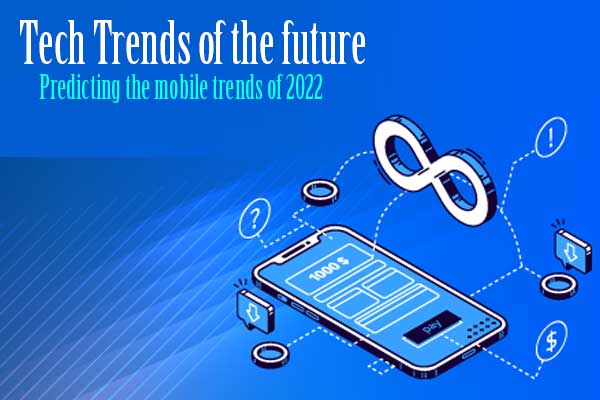The worldwide mobile app industry is booming, and it’s only going to get hotter in the coming years. Global revenue from mobile applications is predicted to reach $613 billion by 2025, up from $318 billion in 2020, according to Statista. With this expansion comes many options for mobile software developers and engineers to boost their apps and provide their consumers with a best-in-class experience.
As the new year begins, it’s time to look ahead and make plans. We look at some of the mobile trends to look up to and the trends and opportunities that mobile software developers and engineers should be aware of.
5G
Although 5G is not yet widely used, it is on its way to becoming the new standard for mobile technology. The worldwide 5G technology market is expected to reach $620.72 billion by 2030, according to Statista. The time for your mobile app to enable 5G connectivity is now, with user-friendly features including enhanced performance speed, rapid data transfer, and decreased latency. 5G technology comes in handy for playing Betway live games online, and fast downloads.
The Internet of Things (IoT) and Cloud
IoT technology and mobile-connected smart gadgets have been around for a while, but according to Statista, IoT investment is projected to smash the $1.1 trillion mark by 2023. The most critical factor driving cloud and IoT adoption is security, which is already becoming a growing issue for businesses. With more than $120 billion spent on IT security globally in 2019, it’s obvious to see why companies are seeking alternatives. Other advantages of IoT and the cloud include lower operating expenses, higher efficiency, and enhanced API connectivity to other platforms.
Artificial Intelligence (AI) and Machine Learning
AI that utilizes predictive analytics and machine learning algorithms will be crucial to creating individualized user experiences for mobile apps. Navigation, speech recognition, and natural language processing require AI (NLP). Behavioral algorithms can improve security by studying user habits and detecting fraud, suspicious actions, and possible data breaches which are all essential elements across multiple sites like Betway.
Mobile Commerce
More merchants are developing native apps or progressive web apps (PWAs) to give a better shopping experience as more people opt for online shopping. Mobile commerce (or m-commerce) differs from e-commerce in that it involves online purchases made using a mobile app rather than a mobile web page. By the end of this year, the mobile commerce industry is estimated to be valued at over $22 billion. Many B2B and B2C firms have observed increased engagement, conversion rates, and revenue growth after implementing a PWA.
Wearables According to research, there will be 1.1 billion linked wearable devices in 2025, with North America having over 700 wearables and the highest number of 5G connections. Wearables are another option to make your consumers’ lives easier: the ability to get notifications and messages on their smartwatch was the most popular feature of wearables. With the rise in betting on the go, more Betway users are utilizing wearables for convenience and the experience that comes with it.
